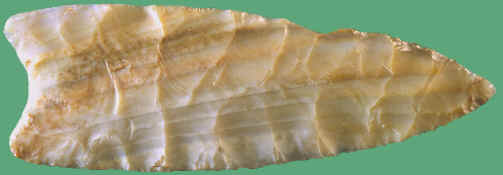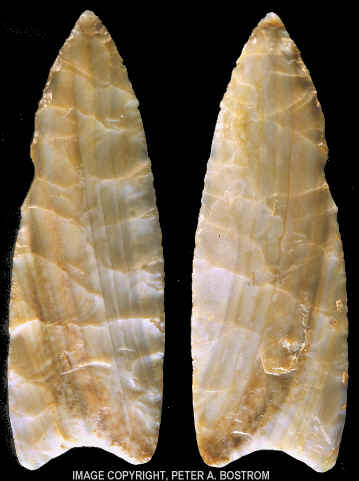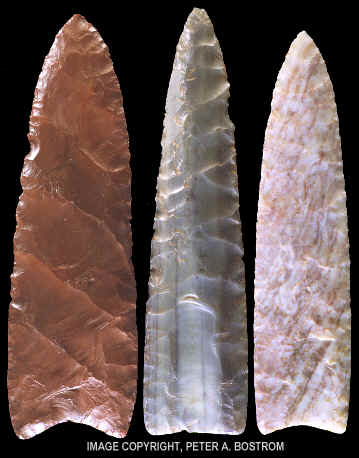|
|
|
There are many different reasons why someone would have placed a cache of stone artifacts in the ground. Some of these reasons are, a tool-stone storage cache, safekeeping cache, human burial cache, storage of trade goods cache, religious offering cache or an underwater votive offering cache. Clovis caches could involve at least five of these categories. A good example of an underwater votive offering cache is the sacred well at the Cenote of Sacrifice on the Mayan site of Chichen Itza, Yucatan. Clovis people would have cached artifacts for at least one or more of the following reasons: raw material storage, grave goods, safekeeping, religious offerings to ancestors or trade goods caches. |
|
|
Clovis caches have provided archaeologists with some of the most skillfully made Clovis artifacts ever found. Many of these artifacts were made from very exotic lithic materials. Clovis people were choosing the most colorful and highest quality cherts and agates available to them for use in their caches. For example, the Simons cache from Idaho (34 pieces) and the Fenn cache from either Utah or Wyoming (56 pieces) contained Clovis points and at least one large biface that were made of optically clear and smoky quartz crystal. The Anzick cache from Montana (100 pieces) contains the largest intact Clovis biface ever found, measuring 12 3/8 inches (31.4 cm) long. The Richey cache from Washington (60 pieces) contains some of the largest Clovis points ever found. The "Rutz" Clovis point is the only larger example known. Whatever the purpose was for Clovis caches they were apparently being made by their most skilled craftsmen out of their most select lithic materials. |
|
|
Caches have been placed in the ground since the days of the Neanderthals. A large percentage of caches, at least those connected with grave goods, ancestor and god offerings were never meant to be retrieved by the people who placed them. Other caches, those used for safekeeping and storage, were placed in the ground for later retrieval. There may not be enough evidence to know why the Drake cache was placed in the ground but it's obvious, for what ever reason, that the cache was never retrieved. The Drake cache is important for the information it has added to the archaeological record. |
|
|
"REFERENCES"
1990,
Yeager, C.G. editor, "History of the Stone Age Fair" pages front
cover& back of front cover. |
|


